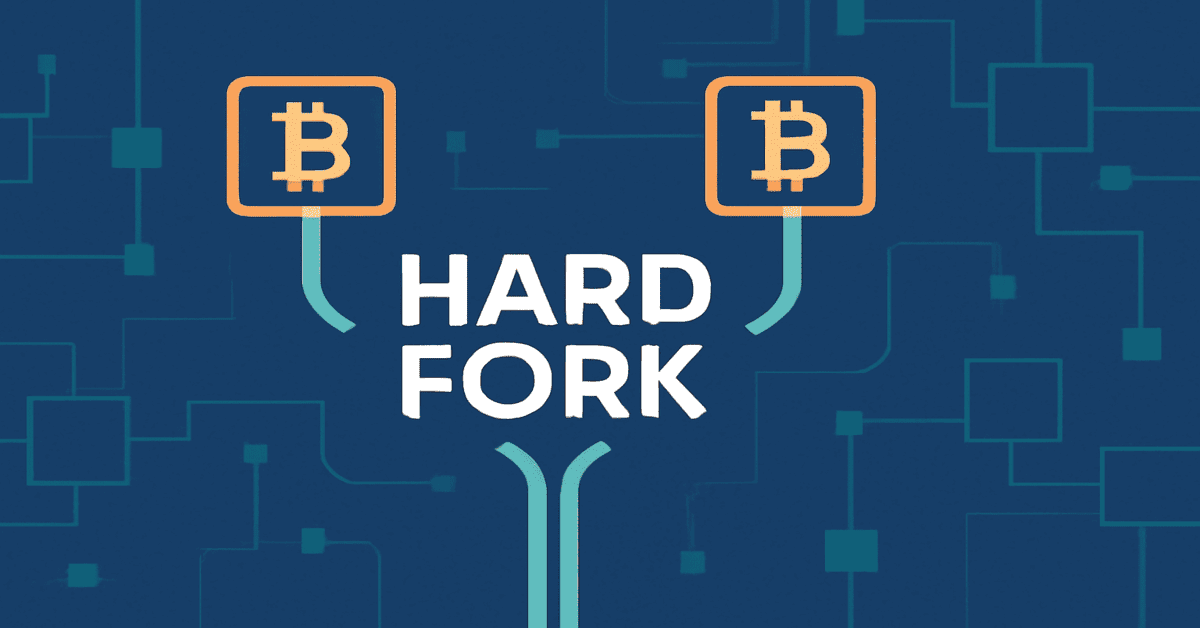
Understanding Hard Forks: Major Blockchain Updates
A hard fork represents a significant blockchain update that results in the creation of two separate, incompatible chains. When a hard fork occurs, nodes that update to the new software continue to operate and validate transactions on the new chain. Conversely, nodes that do not update will continue to function on the original chain.
This event typically arises from major disagreements within the community regarding development direction or when substantial system improvements are required that cannot achieve full consensus. Consequently, two blockchains can coexist, each with its own cryptocurrency.
1. Notable Hard Fork Events
The history of cryptocurrencies has seen several important hard forks, each bringing about significant changes:
Bitcoin Cash (BCH) in 2017: Due to disagreements over block size to increase transaction processing speed, a segment of the Bitcoin community decided to create Bitcoin Cash with a larger block size (8MB compared to Bitcoin's 1MB).
Ethereum Classic (ETC) in 2016: Following the DAO security incident, the Ethereum community initiated a hard fork to recover lost assets. This led to a split into Ethereum (continuing with changes) and Ethereum Classic (maintaining the original protocol). Ethereum Classic adheres to the "code is law" principle but has also faced attacks.
Ethereum's The Merge (2022): This was a major hard fork marking Ethereum's transition from a Proof of Work (PoW) to a Proof of Stake (PoS) consensus mechanism. The goal was to improve performance, security, and reduce energy consumption. This event contributed to increased confidence and value in Ethereum.
Litecoin (LTC) to Litecoin Cash (LCC) in 2018: A development team created Litecoin Cash from the Litecoin blockchain, aiming to improve transaction speed and reduce costs, while also using a different hashing algorithm.
Cardano (Shelley Hard Fork) in 2020: This event was a significant step, moving Cardano from its initial development phase to a new stage, enhancing decentralization and allowing users to participate in transaction validation through staking.
2. Benefits of Hard Forks
Hard forks not only improve technical aspects but also demonstrate continuous innovation in the blockchain space:
- Rapid and Significant Updates: Allows for the efficient implementation of major changes and system improvements.
- Resolving Disagreements: When there are differing visions, hard forks enable different groups to pursue their own paths.
- Enhanced Security and Features: Important security upgrades and new functionalities can be effectively deployed.
3. Drawbacks of Hard Forks
Despite their benefits, hard forks also come with notable challenges:
- Community Division: Hard forks can lead to splits within the user and developer community, causing controversy and potentially weakening the original project.
- Risk of Attacks: During the transition phase, both chains can be vulnerable to attacks.
- User Confusion: The parallel existence of two chains with different rules can complicate asset management and lead to errors.
- Resource Intensive: Implementing a hard fork requires significant time, effort, and cost for development, testing, and deployment, as well as maintaining two separate chains.